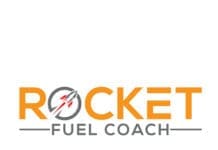When it comes to purchasing a vehicle, many of us find ourselves also needing to make disposition of a current one at or near the same time. This is one part of the auto purchase game that tends to be overshadowed by the importance of the price the new vehicle can be obtained at. Though in reality, what you get for your current driver is just as important as the price you pay for the next one. Remember, your car, truck or SUV is–even if it is paid for–just like real money when it comes to negotiating the out-the-door deal on your next one.
How you choose to best move your current vehicle has a lot to do with the vehicle you are looking to buy. In other words, if you are buying from a dealer, you likely have the option of trading in your current vehicle. However, if you are purchasing your next car from a private owner, you most likely will need to sell your current vehicle on your own.
Trading to a Dealer: Trading your vehicle to a dealer is usually the fastest and least troublesome way to get out of your current car and into a new one. However, as with most things in life, the fastest and easiest way isn’t always the best one when it comes to the monetary side of the equation. This is especially the case since dealers have to allow room to also make a profit on the vehicle you trade in. For all practical purposes, any trade to a dealer is technically a sell, where the purchase price to you simply comes off your purchase price of their vehicle.
Because of the fact that a dealer hopes to turn a profit on your trade in, it makes sense they will put less than a retail price into your trade. That’s completely fair, but you at least need to be aware of what that price really is, and how they came about determining it.
There are a few ways to do this. The first is to make sure you’re aware of the approximate “trade in” value of your vehicle before going to any dealership. One of the easiest ways to do this is to utilize the free valuation service provided by NADA.com. This is the official site for the National Auto Dealers Association, and in my experience of having owned over 40 cars, trucks and SUVs and a stint as a territory rep for Cox Communications’ dealers only AutoMart magazine, I have found the NADA values to be the truest available, when compared to valuation sites like KBB (Kelley Blue Book), Carvana, CarMax and various other “we’ll buy your vehicle” type sites.
When determining your valuation on the NADA or any website, you are at best only going to get the “clean trade” price. You can’t expect a dealer to pay “clean retail” for a car they are going to then have to run through their shop, and potentially spend some money on. (Trust me, EVERY SINGLE VEHICLE needs something 85% of the time, even if you as the owner are unaware of it. The truth is, a lot of every day driver cars, trucks and SUVs–even the overall good condition ones–don’t legitimately fit into the “clean trade in” category, and fall more in the “average trade in” range. Find that, being careful to correctly input your vehicle’s mileage and features, and you’ll be armed with a pretty good picture of what you should get for your trade in when you are also buying a car from that dealer. Note: This is not the only valuation dealers use to determine what they can or can’t put into your trade at any given time. Dealers may also check other sales criteria available to them online, such as what same year, similar mileage vehicles as yours are currently bringing at auto auctions within their region, and how many other cars or trucks like yours are currently for sale at lots within a 100 to 300-mile radius of them, and for what price. In other words, availability, competitor pricing and demand all have a legit baring on what your vehicle is worth to any given dealer at a certain time.
Another very important aspect of selling to trading to a dealer: Make sure the numbers are the real numbers. You shouldn’t have to worry about this, but the truth is you do. Most dealers are above board and will show and explain anything and everything you ask. But just like with anyone selling anything, from magazine, TV, radio or web advertising to real estate to restaurants serving you food, it never hurts to ask questions so you are sure that what you are paying for (or in this case, also being paid for your trade) is exactly what you think it is. One of the best ways to make sure of this is an auto purchase transaction to get a seller’s best price, without even mentioning any trade, before you start negotiating. The bottom line is, if you get one price for the vehicle you’re buying, then that price goes up because you have a trade, at a fair trade-in price, something is wrong with the deal. An old, and hopefully seldom used these days, practice in the car sales game was for dealers to go up on the prices they were offering any buyer for their trade; but in doing so, pad all or part of that money back into the deal somewhere else. That somewhere else often being their price they would be selling you their car for. Pay attention to that. Get the best price for your purchase and a fair offer for your trade. In an ideal transaction, the two should not hinge on each other, or else one price isn’t really what its being sold to be.
Join Will next issue for Part 2 on how to sell your own car.
Will Estell is a writer, editor, founder and publisher of multiple titles over the past 25 years. Will is credited with over 700 published articles in various regional and national publications, along with two book titles. Originally from the backwoods of North Mississippi, Will is a proud father of three, and makes his home in Destin and Navarre along with his wife, ABC news anchor, Laura Hussey.






























































